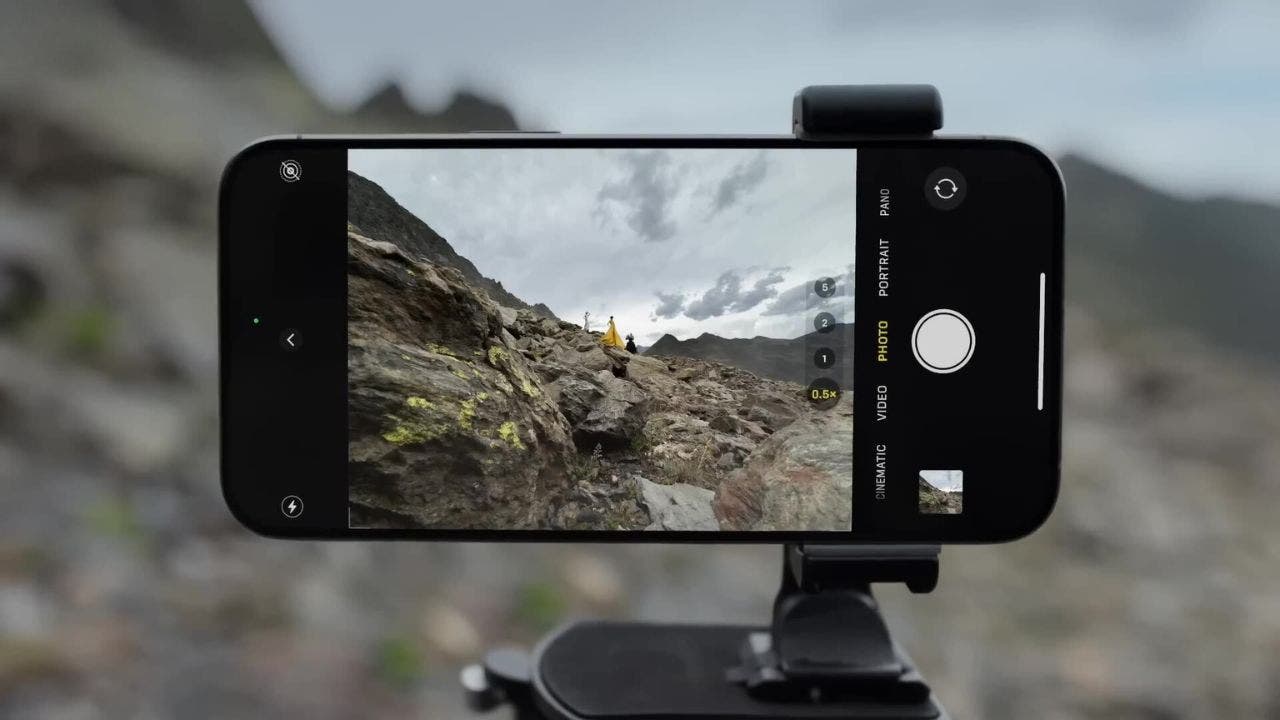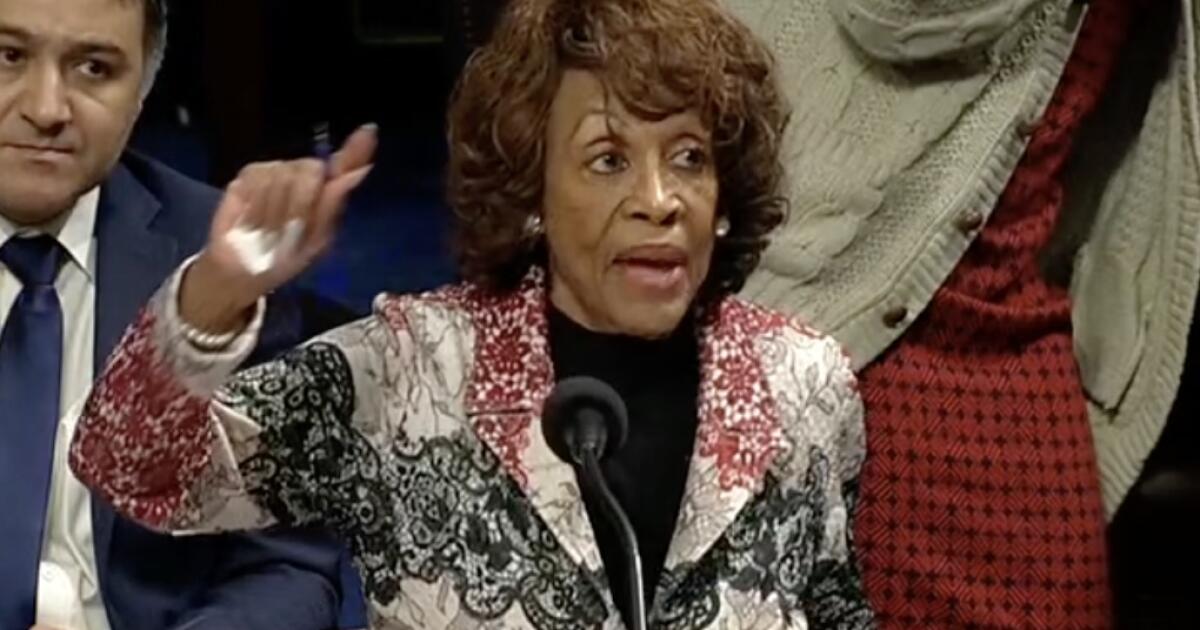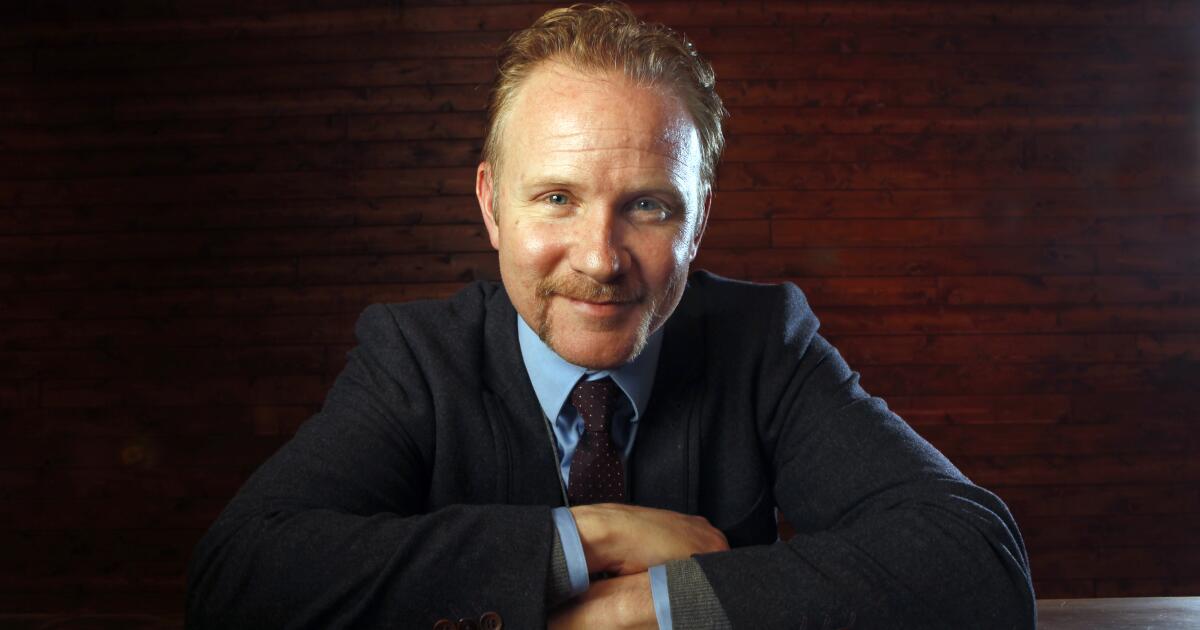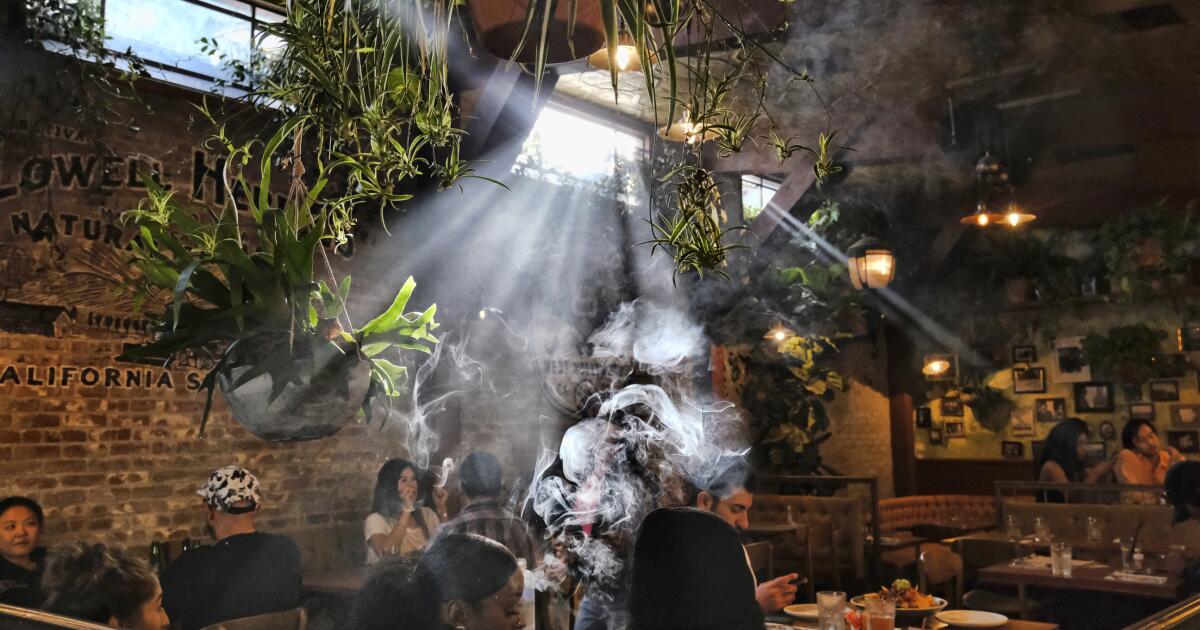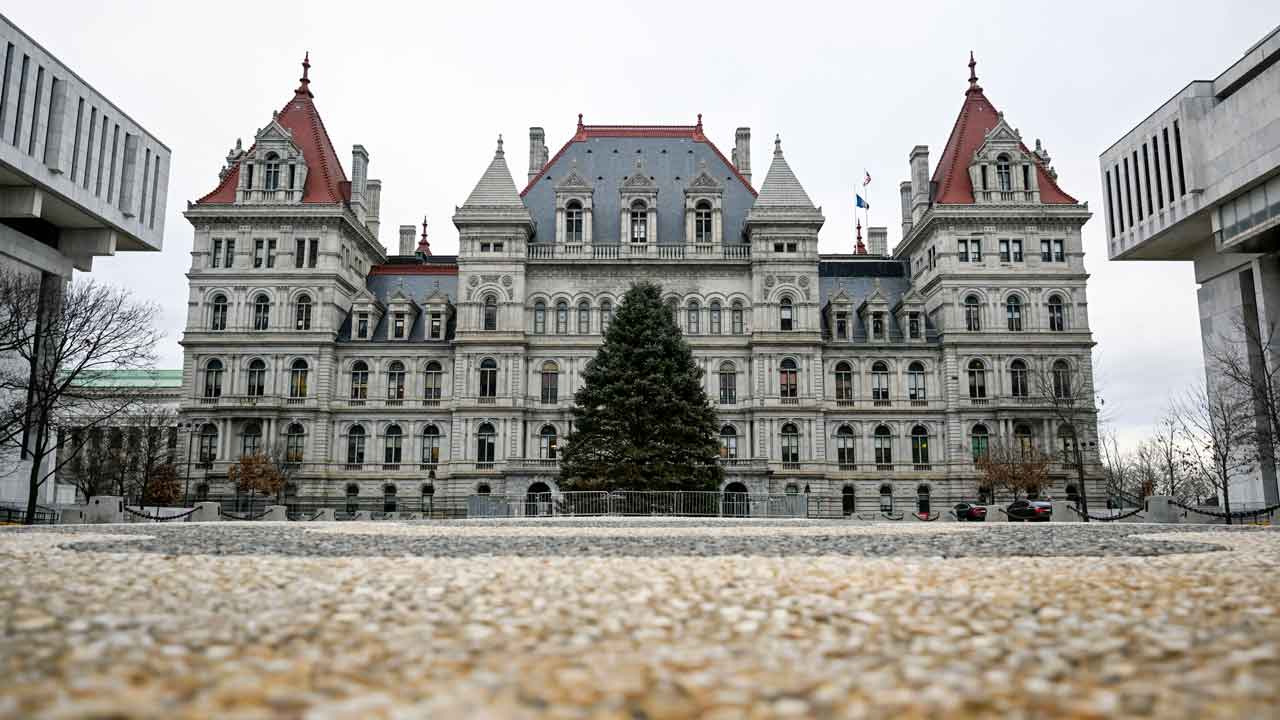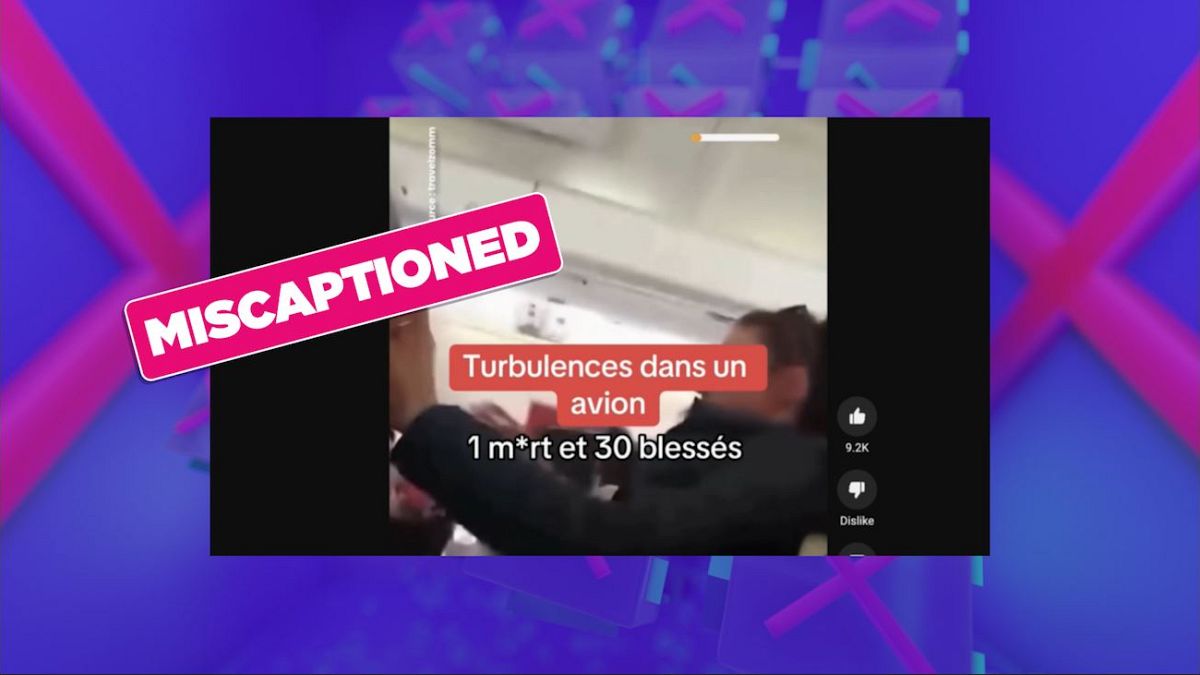Utah
Meet the man behind Utah Athletics social media account
/cdn.vox-cdn.com/uploads/chorus_asset/file/25066221/merlin_3005108.jpg)
Hours before Utah’s football -home opener against Florida, Gators defensive end Princely Umanmielen shared a photo to Instagram of Rice-Eccles Stadium.
It was captioned: “Lil ah stadium.”
Sure, the 51,444-seat home of the Utes doesn’t compare to Florida’s Ben Hill Griffin Stadium, which seats 88,548. Rice-Eccles Stadium would be the second-smallest stadium in the SEC (only Vanderbilt’s FirstBank Stadium seats less at 40,350; the second-smallest stadium after Vanderbilt is Kentucky’s Kroger Field at 61,000), which has seven venues over 85,000 capacity.
But as Umanmielen learned, 53,644 — a Rice-Eccles Stadium record — can still make lots of noise. Who knows just how much the crowd noise disrupted Florida, which is used to working in hostile SEC environments, but the Gators did have three false starts and a delay of game penalty.
During Utah’s 24-11 win over Florida in the Gators’ first true nonconference road game outside of the Sunshine State since 1991, Umanmielen’s pregame post started spreading on social media.
The morning after the game, the Utah Athletics account responded with a post on social media.
“Lil ah dub.”
The post on X, the social media site formerly known as Twitter, was viewed 2.1 million times, with over 20,000 likes and 4,700 retweets and got picked up by some big players in the social media space, like ESPN and Bleacher Report.
“It’s just stuff like that that can be really fun when you have some form of way of referencing it, whether it’s pop culture or something else fun, that you can have a little back-and-forth banter with another school,” said Nick Bolerjack, who helps run the Utah Athletics social media accounts.
“We try to keep it fun here. We try to keep it interesting for players and fans, but also within a realm of not getting personal or not trying to attack anybody else. Just trying to keep it fun and lighthearted.”
‘You have so many eyes on you now’
In the modern social media age, which started with Facebook circa 2004, sports teams’ social media accounts are big business. But it didn’t start out that way.
In the dawning of “Web 2.0,” some team social media accounts were run by marketing interns or public relations staff as another thing added to their plates.
Take a look at a sampling of Utah Athletics’ Twitter feed circa 2010, still in the early days of the site. Updates were few and far between. Photos and videos still hadn’t been integrated natively on the site.
Fast-forward to 2023, and the Utah Athletics X account tweeted or retweeted approximately 35 posts about Utah’s 55-3 win over Arizona State last Saturday, complete with original photos and videos, clips of the Pac-12 Network broadcast and custom-made graphics.
As more and more people started joining social media and spending increased time on sites like Twitter, Facebook and Instagram, brands — including sports teams — figured out that social media was a valuable way to connect with their fans and get information out.
In less than 20 years’ time from when Facebook first started, social media has become a full-fledged industry. “Social media intern” is a way some folks refer to the people behind sports teams’ social media accounts, but the industry has moved past that long ago. Nowadays, teams like Utah employ a full-time staff of social and creative employees.
Eight people are listed under the “digital and creative media” section in Utah Athletics’ staff directory, from social media employees to photographers to videographers.
Nick Bolerjack, son of longtime Utah Jazz TV broadcaster Craig Bolerjack, is the director of social media and digital strategy for Utah Athletics, working with Matt Sanchez, who is the athletic department’s associate athletics director for digital and creative media.
Nick Bolerjack worked for the Utah Jazz from 2015 to 2020 as part of their social media and photography team before taking a job at Utah to head up men’s basketball social media in 2021. From there, he moved to helming the main Utah Athletics account on all social platforms.
The evolution that Bolerjack has seen over the past eight years that he’s been working in social media has happened at warp speed. The importance of social media has heightened to the point that it’s the first place major sports news, like NBA trades, breaks.
“It’s kind of crazy how it evolved so quick, and I feel like when I began to get into the social media realm is when it really started to develop from something that was, I don’t know if they necessarily really didn’t take it too seriously, but it wasn’t really like a go-to for a lot of information. And now it is the go-to place for breaking news,” Bolerjack said.
With increased eyeballs (Utah Athletics has more than 120,000 followers on X, more than 76,000 on Instagram and more than 184,000 on Facebook) comes increased attention. But it can also mean increased scrutiny.
“Basically, you really have to realize that you have so many eyes on you now. Everything that you put out there, if you misspell a word or if you slip up or if you have the wrong information on there, there’s a ton of eyeballs watching,” Bolerjack said. “… Especially a brand account like at Utah Athletics, you’re not only representing the athletes, but you’re representing the university as a whole. A lot of the time sports is kind of the gateway into a university.”
What does a typical game day look like?
Those 35-plus posts that show up on your feed during the game don’t just show up out of thin air, though it may seem that way.
Bolerjack and team’s social media planning for fall Saturdays start well before kickoff, beginning at the start of the week.
“It’s not something that we just show up and hope that everything goes well,” Bolerjack said.
There’s content planning meetings, ideas meetings and coordination meetings with photographers and videographers, all to make sure that when game day arrives, everything works as smoothly as possible.
Of course, during the week, there’s more content to post. On the football side, that includes everything from a rankings update graphic to hype videos to uniform reveals to highlighting what players won various weekly awards to a preplanned graphic poking a little fun at the opposing team if Utah wins.
Utah has graphic designers that make images for social media, and even have a dedicated graphic designer that designs all of the recruiting materials — envelopes, letter and personalized graphics for each player Utah is recruiting.
From his perch in the press box, Bolerjack also helps run the Utah football specific accounts on game day, in addition to the Utah Athletics account. He arrives more than three hours before kickoff, making sure people are getting photos of the tailgates, team arrival and other pregame activities, like a helicopter flyover, before everyone on the social team gets in position for the game.
Once the ball is booted through the air for the first time, it’s controlled chaos.
Videographers texting in that they got the perfect shot, Bolerjack reminding photographers to get shots of a football alumnus who is at the game. Photographers and videographers uploading their content in nearly real time to be posted right after a touchdown happens.
Devaughn Vele opens scoring for Utah against Arizona State, and nearly instantaneously, there’s a clip of the touchdown from the game broadcast up, photos of the touchdown posted and a score graphic posted with Vele’s face on it in the span of less than five minutes.
This process repeats every time Utah scores or makes a big defensive play, and on Saturday, that was a lot in the Utes’ bounce-back win over the Sun Devils.
“There’s a lot of coordinating, a lot of text messages flying around throughout the game,” Bolerjack said.
If Utah’s losing big, like it did in a 35-6 loss to Oregon, things can be a little quieter.
The Utah Football X account posted just five times after kickoff, and aside from a final score post, tweeted nothing after posting a graphic of Cole Becker after he kicked a field goal in the first quarter to make it 7-3.
As for the Utah Athletics X account, it posted only five times during the loss to Oregon, including a link to the postgame press conference and a retweet of former Utah safety and Washington Commanders player Terrell Burgess that read: “Still love the Utes.”
“Depending on how the game goes, it can be a flurry of text messages and posts and all that good stuff. Or if it doesn’t go your way, it can be kind of quiet during a game day. So it all just depends on the flow of the game and how the team’s doing,” Bolerjack said.
Last Saturday in a Utah win, game day content ends with a little jab at Arizona State — a graphic of a pitchfork being tossed to the ground — access inside the locker room as the players sing the fight song and a livestream of the postgame press conference.
The impact of ‘College GameDay’
The day after Utah knocked off USC on the road, which was already a big day in terms of social engagements, ESPN’s “College GameDay,” the three-hour traveling pregame show, announced it was heading to Salt Lake City for the Utah vs. Oregon matchup.

Swoop hypes up the crowd University of Utah students during the filming of ESPN’s “College GameDay” show at the University of Utah in Salt Lake City on Saturday, Oct. 28, 2023.
Megan Nielsen, Deseret News
What followed was basically a weekend-long promotion of the university on ESPN. It started with a bang on Friday afternoon, when Utah coach Kyle Whittingham was coaxed into riding into his “The Pat McAfee Show” appearance on a motorcycle, wearing sunglasses and a cutoff shirt to match McAfee’s shtick.
From there, it was on to the main event, which officially started on Saturday at 7 a.m. MDT, but was even earlier for the social media crew, who started sending out videos from the set at Presidents Circle around 5 a.m. MDT.
From behind-the-scenes footage from the “GameDay” set, videos and pictures of the crowd and highlighting the best signs, Utah’s social accounts accentuated the “GameDay” broadcast.
In all, Bolerjack said Utah’s social media had about 5 million “impressions,” aka views, on its content that week and its follower count across all platforms saw a big spike.
“Basically 5 million people saw our content across Facebook, Instagram, Twitter, TikTok, etc., which was huge for us. To have 5 million eyes on our content is massive,” Bolerjack said.
It can’t hurt in recruiting to have a strong social media presence, either, especially in the age of NIL. Recruits aren’t choosing schools based on which has the best social media team, after all, but it could be a positive if a recruit is seriously considering Utah.
‘They’re not just an athlete, they’re a person’
As an extension of the program, the social media team can get access to players and coaches that isn’t afforded to the general media in this age of closed practices, limited media availability and carefully timed interview sessions.
Bolerjack tries to make the most of that access, highlighting a video he produced on running back Ja’Quinden Jackson recently.
“I’ve always preached that access to athletes is key. Whether it’s getting a chance to talk to them about something personal or their interests. We actually just had a tattoo piece go out on Ja’Quinden Jackson, our running back, and that got a really good response,” Bolerjack said.
“So it’s always nice to kind of humanize athletes. A lot of people just see them on the field or on the court of play, and it’s always nice just to give an in-depth look to them, to humanize them. They’re not just an athlete, they’re a person. There’s a real person out there with feelings and emotions.”
In the two-minute video, Jackson shares the reasoning for some of his tattoos, including the “22 forever” symbol he got to remember teammates Ty Jordan and Aaron Lowe, who died in 2021 and 2022.
“Them is my boys and brothers forever. I still got them on my mind every day, I’m still grinding for them,” Jackson said.
He also has tattoos to memorialize his grandfather and some of his friends who died, along with a tattoo of his Utah jersey.
“It’s my scars. I say that. These are my life scars,” Jackson said of his tattoos.
At the end of the day, getting to interact with the players and coaches and try to tell their stories to the fanbase is a big reason why Bolerjack enjoys the job.
“It’s also fun to interact with them because they really are just awesome people. When you get to know all these kids, it’s just really fun to work with them and see things from their perspective,” Bolerjack said.
“Same with the coaches. They’re working day and night constantly, no breaks, trying to make sure that the program is up to snuff. I can’t say enough about just being able to work with the coaches and players. It really is a great time. It puts things into perspective. It kind of gives me a reason why I still enjoy working in sports, just interacting with coaches and players.”

Nick Bolerjack, University of Utah Athletics director of social media, shows a recent Utah Athletics social media post on his phone at the Spence and Cleone Eccles Football Center in Salt Lake City on Tuesday, Nov. 7, 2023.
Kristin Murphy, Deseret News

Utah
Could EPA air quality standards be Utah’s first test of its new sovereignty law?

Top Utah officials aren’t happy with federal air quality standards. And their ammunition to fight back could jeopardize the state’s federal highway funding or even the federal government overriding how the state handles air quality to begin with.
In February, Gov. Spencer Cox called the stricter regulations imposed by the Environmental Protection Agency “onerous” and “so stringent” that it will be “impossible” for the state to comply. The EPA reduced the amount of PM2.5 and ozone pollution allowed in the atmosphere, making it harder to fall within the attainment standards, which Utah hasn’t met since 2006. The Utah Attorney General’s Office has filed and joined other states in challenging the agency over its mandates, like the “Good Neighbor Rule,” which targets ozone pollution emitted across state lines.
The majority of the Utah Legislature is so unhappy with the regulations it partly inspired a new state law that aims to push back. Republican Sen. Scott Sandall’s 2024 “Utah Constitutional Sovereignty Act” sets up a process for the state to opt out of federal regulations they deem as overreach.
The first test of the new statute could be the looming air quality battle the state is picking over the updated air quality standards and the Clean Air Act. But it won’t be an easy sell.
“If the state wants to test the red line,” said Brigham Daniels, a law professor at the University of Utah, “this is a risky one.”
During a May 15 Natural Resources, Agriculture, and Environment Interim Committee meeting, Bryce Bird, the director of the Utah Division of Air Quality, said Utah is “still really struggling” to meet EPA ozone standards, especially in Salt Lake, Davis and parts of Weber and Tooele counties. But if the state doesn’t fall within the attainment zone of 70 parts per million, which is considered protective of public health, Utah could face federal funding sanctions.
“That prevents both federal funds being used to expand transportation projects here in that non-attainment area, but it also prohibits state funding from being used for regionally significant projects,” Bird said. “So it really does have that direct impact on the fastest growing metropolitan area in the country.”
If Utah still doesn’t clean up the air after funding is frozen, Bird said the federal government could swoop in and create its own plan for how Utah will meet ozone standards. If that comes to pass, the state “will lose flexibility and input into the plan.”
Utah and the Intermountain West face an uphill battle when it comes to meeting EPA ozone standards. Bird said states like Arizona, Utah and Colorado have “higher natural concentrations of ozone and a greater impact from international transport of the precursor emissions to ozone formation,” which places some of the problem outside of the state’s control.
The fact that Utah isn’t solely responsible for ozone pollution within its boundaries is Sandall’s biggest complaint, calling it “the heart of the heartburn,” and that Utah doesn’t have to “try to comply to an uncontrollable standard.”
“That’s the message that we’ve got to send to the federal government is we can’t do that. There’s no way,” he said during the May 15 meeting. “So whether we do that through legislation, whether we do that through a lawsuit, whatever we do, we have to be the ones to say no.”
Republican Rep. Casey Snider followed Sandall’s comments by stating “perhaps there needs to be a fundamental shift in the key objectives” of the Utah Division of Air Quality centered around “pushing back on this overzealous nature of the federal government rather than simply complying with the impossible.”
Daniels said he’s sympathetic to the predicament the state is in because of what the EPA considers to be “a healthy air quality will be very difficult for the state to obtain,” given the outside exacerbating factors. But challenging the Clean Air Act isn’t that simple.
From his perspective, if Utah does take the steps to challenge the Clean Air Act under the Utah Constitutional Sovereignty Act, the state is likely to fail because of the Supremacy Clause, which says the Constitution and federal statutes are “the supreme law of the land,” trumping any state laws.
Daniels added EPA employees are mandated by federal law to enforce the consequences of a state not complying with standards set by the Clean Air Act and a state sovereignty clause won’t stop them from doing so either.
“Within the realm of environmental law and natural resources law, you almost couldn’t have chosen a worse statute to gamble with,” Daniels said. “Because the federal government doesn’t have any discretion about whether or not it moves forward with sanctions.”
Utah
What the new ESPN SP+ rankings tell us about BYU, Utah and Utah State
While there is still plenty of time until the 2024 college football season kicks off — for BYU and Utah State, the season is 100 days away, and 98 for Utah — that doesn’t stop the influx of discussion about the upcoming year.
One of the staples of preseason chatter is ESPN’s SP+ rankings, and earlier this week, Bill Connelly released his latest edition, i.e., the post-spring edition, and there are varying expectations for the three Utah FBS schools.
For the Utes, the 2024 season presents the chance to make a big impression in a new conference, the Big 12, while making a run at the expanded College Football Playoff with Cam Rising back and healthy.
For the Cougars, this year is projected to be another difficult learning season as the program adjusts to life at the power conference level.
And for the Aggies, there’s been plenty of turnover again, though perhaps less pessimism surrounds the program heading into 2024 — and a hope the school can finish in the upper half of the Mountain West.
What does Connelly’s latest SP+ rankings — which are calculated on returning production, recent recruiting and recent history — project for these three schools?
These insights give a glimpse at how Utah, BYU and Utah State are viewed on a national scale heading into the year.
As Connelly explains, “SP+ is a tempo- and opponent-adjusted measure of college football efficiency. It is a predictive measure of the most sustainable and predictable aspects of football, not a résumé ranking, and along those lines, these projections aren’t intended to be a guess at what the AP Top 25 will look like at the end of the season. These are simply early offseason power rankings based on the information we have been able to gather to date.”
Where does BYU football rank in ESPN’s post-spring SP+ rankings?
- BYU ranks No. 67 nationally in the SP+ metrics with an overall minus-2.0 rating, a two-spot drop from the preseason SP+ rankings released in February.
- That includes BYU rating No. 63 on offense, No. 84 on defense and No. 11 on special teams.
- By comparison, the Cougars were No. 60 overall in last year’s post-spring ESPN SP+ rankings. BYU went 5-7 last season.
- The Cougars rank 12th among the new-look Big 12 Conference in the SP+ rankings, just ahead of Colorado (No. 69) and Cincinnati (No. 70) and just behind Baylor (No. 61). Only two of BYU’s conference games this season — at Houston (No. 79) and vs. Arizona State (No. 88), both in late November — come against Big 12 teams below the Cougars in the SP+ rankings.
- There are four Big 12 teams in the top 25 of the SP+ rankings: Kansas State (No. 17), Utah (No. 18), Oklahoma State (No. 20) and Arizona (No. 24). BYU plays all four this season, with only one road game at the Utes.
- BYU is ranked more than 40 spots below one of its two FBS nonconference opponents — SMU comes in at No. 23 — while the other, Wyoming, is behind the Cougars, at No. 87.
- The Big 12 is third among all FBS leagues in average SP+ ranking, behind only the SEC and Big Ten.
- BYU ranks 55th nationally in returning production at 65%, per Connelly’s numbers. That includes ranking No. 52 on offense (66%) and No. 51 on defense (64%).
Where does Utah football rank in ESPN’s post-spring SP+ rankings?
- Utah ranks No. 18 nationally in the SP+ metrics with an overall 16.1 rating, a one-spot drop from the preseason SP+ rankings released in February.
- That includes Utah rating No. 39 on offense, No. 11 on defense and No. 34 on special teams.
- By comparison, the Utes were No. 14 overall in last year’s post-spring ESPN SP+ rankings. Utah went 8-5 last season while dealing with a litany of injuries.
- The Utes rank second among the new-look Big 12 Conference in the SP+ rankings in their first year in the league, just one spot behind Kansas State (No. 17) and ahead of Oklahoma State (No. 20) and Arizona (No. 24). Utah plays at Oklahoma State and home against Arizona in back-to-back weeks to start conference play, but avoids playing Kansas State.
- Utah is ranked well ahead of its two FBS nonconference opponents — Baylor comes in at No. 61, while Utah State is No. 101. While both Utah and Baylor are now in the same conference, that will be a non-league game.
- The Big 12 is third among all FBS leagues in average SP+ ranking, behind only the SEC and Big Ten.
- Utah ranks 43rd nationally in returning production at 66%, per Connelly’s numbers. That includes ranking No. 61 on offense (63%) and No. 33 on defense (69%).
Big 12 teams in the post-spring SP+ rankings
17. Kansas State.
18. Utah.
20. Oklahoma State.
24. Arizona.
30. Iowa State.
34. West Virginia.
36. TCU.
37. Kansas.
42. Texas Tech.
48. UCF.
61. Baylor.
67. BYU.
69. Colorado.
70. Cincinnati.
79. Houston.
88. Arizona State.

Where does Utah State football rank in ESPN’s post-spring SP+ rankings?
- Utah State ranks No. 101 nationally in the SP+ metrics with an overall minus-11.0 rating, a six-spot drop from the preseason SP+ rankings released in February.
- That includes Utah State rating No. 49 on offense, No. 132 on defense and No. 92 on special teams.
- By comparison, the Aggies were No. 116 overall in last year’s post-spring ESPN SP+ rankings. Utah State went 6-7 last season with a bowl game loss.
- The Aggies rank eighth among Mountain West teams in the SP+ rankings, just behind Colorado State (No. 98) and Hawaii (No. 100) and slightly ahead of San Diego State (No. 14).
- Utah State’s conference opener will be against the highest-ranked MWC team in the SP+ rankings, No. 38 Boise State. The game is set for Oct. 5 in Boise.
- Utah State will play three FBS nonconference opponents this year — both Utah (No. 18) and USC (No. 21) are in the SP+ top 25, while Temple is three from the bottom at No. 132.
- The MWC is sixth among all FBS leagues in average SP+ ranking, behind fellow Group of 5 league the Sun Belt Conference and ahead of the American Athletic Conference.
- Utah State ranks 86th nationally in returning production at 57%, per Connelly’s numbers. That includes ranking No. 43 on offense (68%) and No. 110 on defense (47%).
- That’s a significant improvement over the post-spring SP+ returning production numbers last year, when Utah State ranked 127th nationally (41%).
Mountain West Conference teams in the post-spring SP+ rankings
38. Boise State.
57. Fresno State.
71. UNLV.
87. Wyoming.
92. Air Force.
98. Colorado State.
100. Hawaii.
101. Utah State.
104. San Diego State.
112. San Jose State.
121. Nevada.
131. New Mexico.
Utah
Former North American leaders descend on SLC for international trade conference
Utah’s rising prominence as a player in the global business landscape was the focus of a Thursday conference in Salt Lake City that included an impressive roster of domestic and international leaders including former President George W. Bush, former Mexican President Vicente Fox and past Canadian Prime Minister Stephen Harper.
Natalie Gochnour, associate dean for the University of Utah’s David Eccles School of Business and director of the Kem C. Gardner Policy Institute, told attendees of the Crossroads of the World Summit at downtown’s Grand America hotel that Utah had already established itself as the crossroads of the West and was building an argument for a more ascendant position.
“What I do know is we’re the undisputed crossroads of the West and that’s the seed corn for being the crossroads of the world,” Gochnour said.
Gochnour shared data that reflects Utah’s outsize performance when it comes to global trade, including a comparison of the state’s rankings of 30th in the country in terms of population, 29th largest economy but 16th on a basis of per capita export values.
Gochnour also pointed out that, among western states, Utah has the third highest per capita export ranking, even beating out economic powerhouse California.
“It’s a pretty big punch,” Gochnour said.
While Bush was among the marquee speakers at Thursday’s event, the former president’s presentation was closed to media.
Utah Gov. Spencer Cox quipped about his role as the state’s CBO — Chief Bragging Officer — and shared an anecdote from a recent trip to Vancouver, B.C., where he attended a TED conference.
Cox said he shared a dinner table with a well-known hedge fund billionaire, who he declined to identify, who said Utah’s most powerful built-in asset was the shared characteristics of its residents as smart, hard-working people who prioritize their families.
“Those are Utah values and they used to be American values,” Cox said. “Utah is what America used to be and, I hope, what it can be again.
“I can say those things (about Utah) but to hear it from someone else … I thought a lot about that conversation.”
This story will be updated.
-

 Politics1 week ago
Politics1 week agoSouthern border migrant encounters decrease slightly but gotaways still surge under Biden
-

 Politics1 week ago
Politics1 week agoDem newcomer aims for history with primary win over wealthy controversial congressman
-

 World1 week ago
World1 week agoSlovakia PM Robert Fico in ‘very serious’ condition after being shot
-

 World1 week ago
World1 week agoCanadian Nobel-winning author Alice Munro dies aged 92
-

 Politics1 week ago
Politics1 week agoVulnerable Dem incumbents move to the center in key swing states as Biden panders to far-left base
-

 World1 week ago
World1 week ago‘Monstrous crime’: World reacts to attack on Slovakia’s prime minister
-

 News1 week ago
News1 week agoSmall but mighty Nimble becomes first mixed-breed dog to win Westminster agility title
-

 News1 week ago
News1 week agoHow a migrant aid group got caught up in a right-wing social media thread : Consider This from NPR




